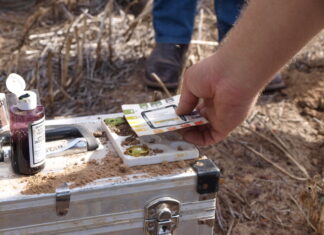CALLS to cull great white sharks have been challenged with the release of long-anticipated data last week.
The population numbers found in the study rebut the anecdotal evidence of great white abundance, which prompted some bodies to call for delisting of the threatened species.
The CSIRO study has estimated adult white shark numbers are set at 750 in eastern Australasia and 1460 in western Australasia and are not concentrated on the coastline.
“The estimated great white shark numbers do not give any ground to change the threatened species classification for the species,” Humane Society International Australian campaigns head Nicola Beynon said.
“It is protected as a species vulnerable to extinction under federal and state legislation.”
A nomination from Humane Society International secured the vulnerable to extinction listing for the species in 1997 and the population since then has been flat with no evidence of an increase, according to the CSIRO.
“At this stage CSIRO has taken a snapshot of the population and will be unable to determine the ongoing population trend for the species without further study,” Ms Beynon said.
“It will take at least five to 10 years before we can determine the population trajectory for great white sharks which are impacted by by-catch in fisheries and shark culling programs in New South Wales and Queensland.
“Studies show killing sharks does not make our beaches safer and all Australian governments need to support a sensible and precautionary approach to Australia’s shark population.”





